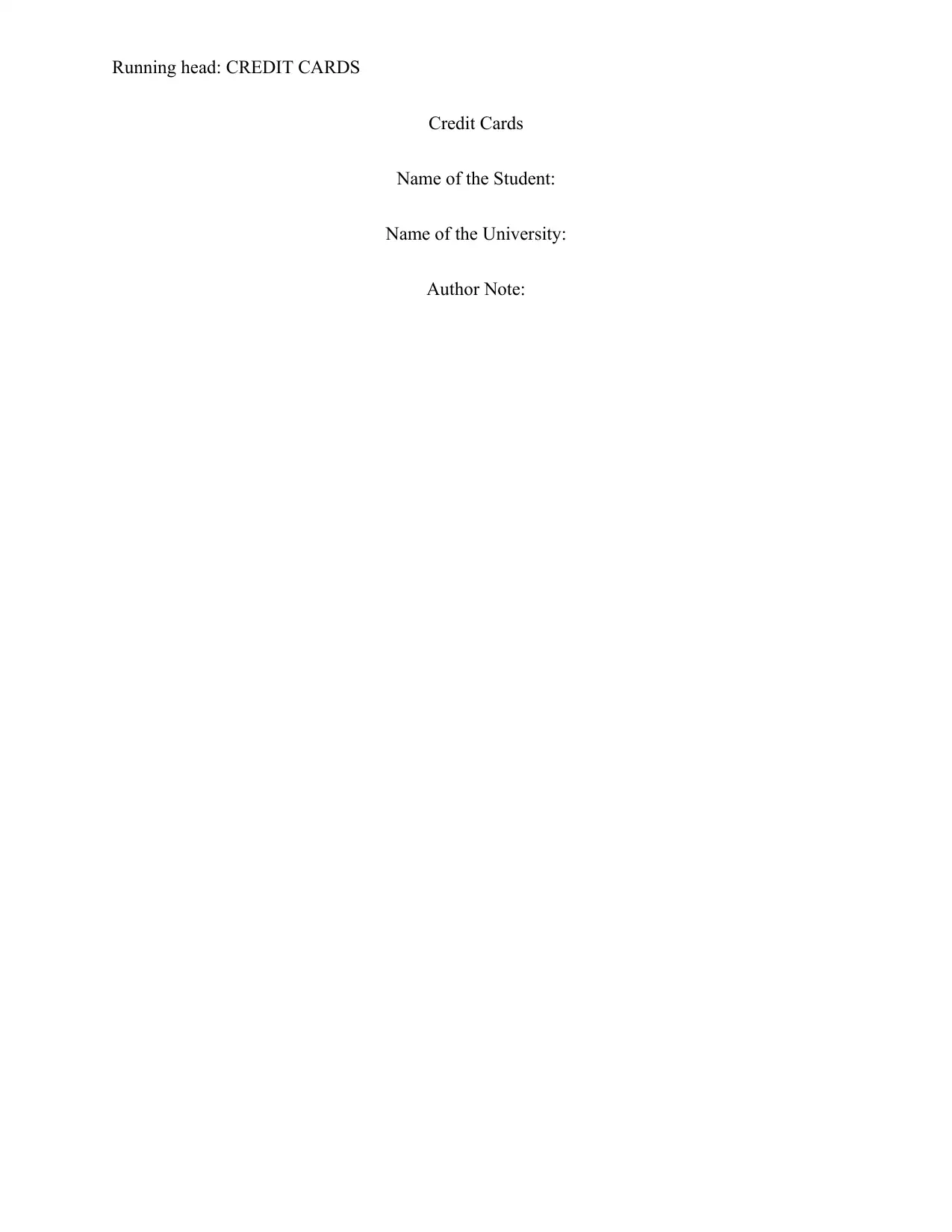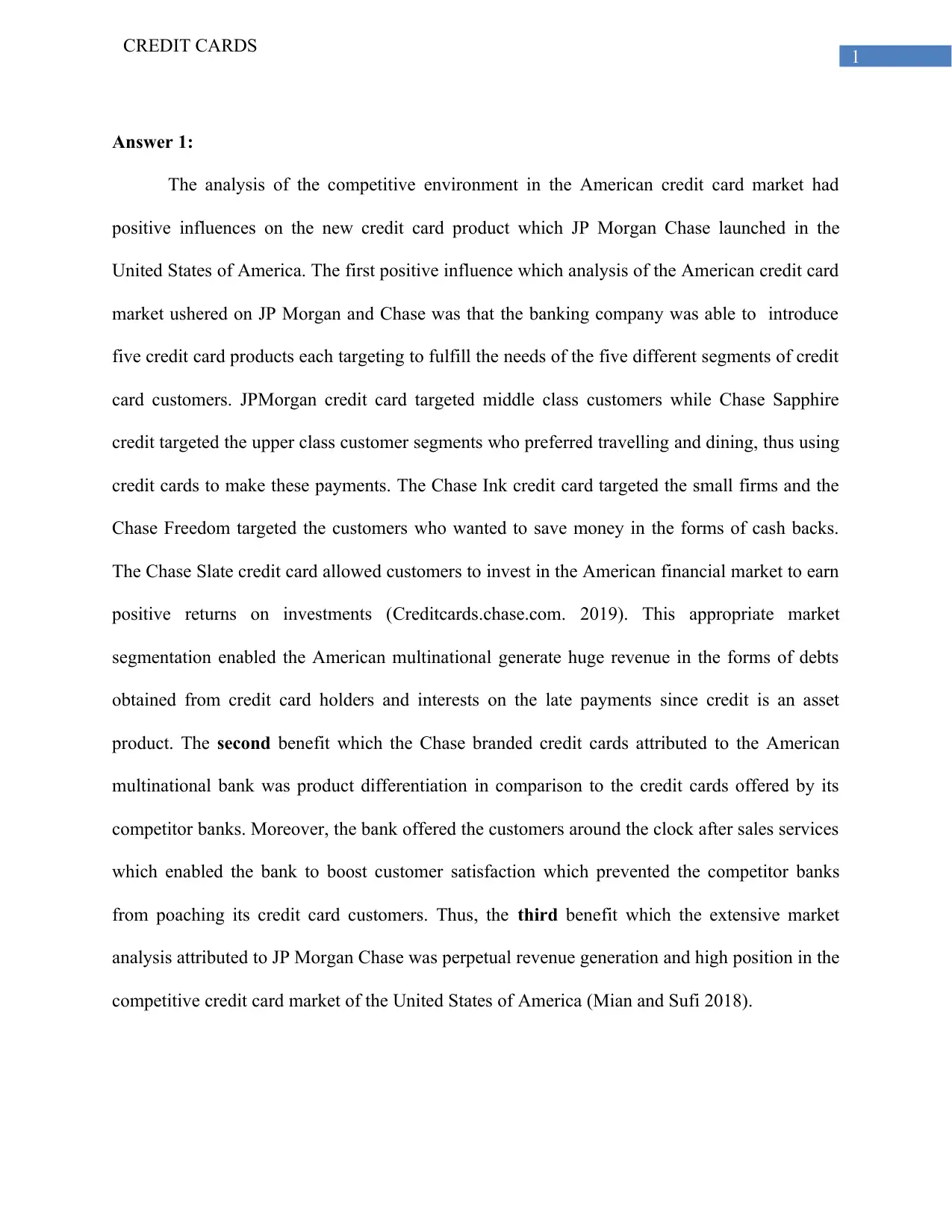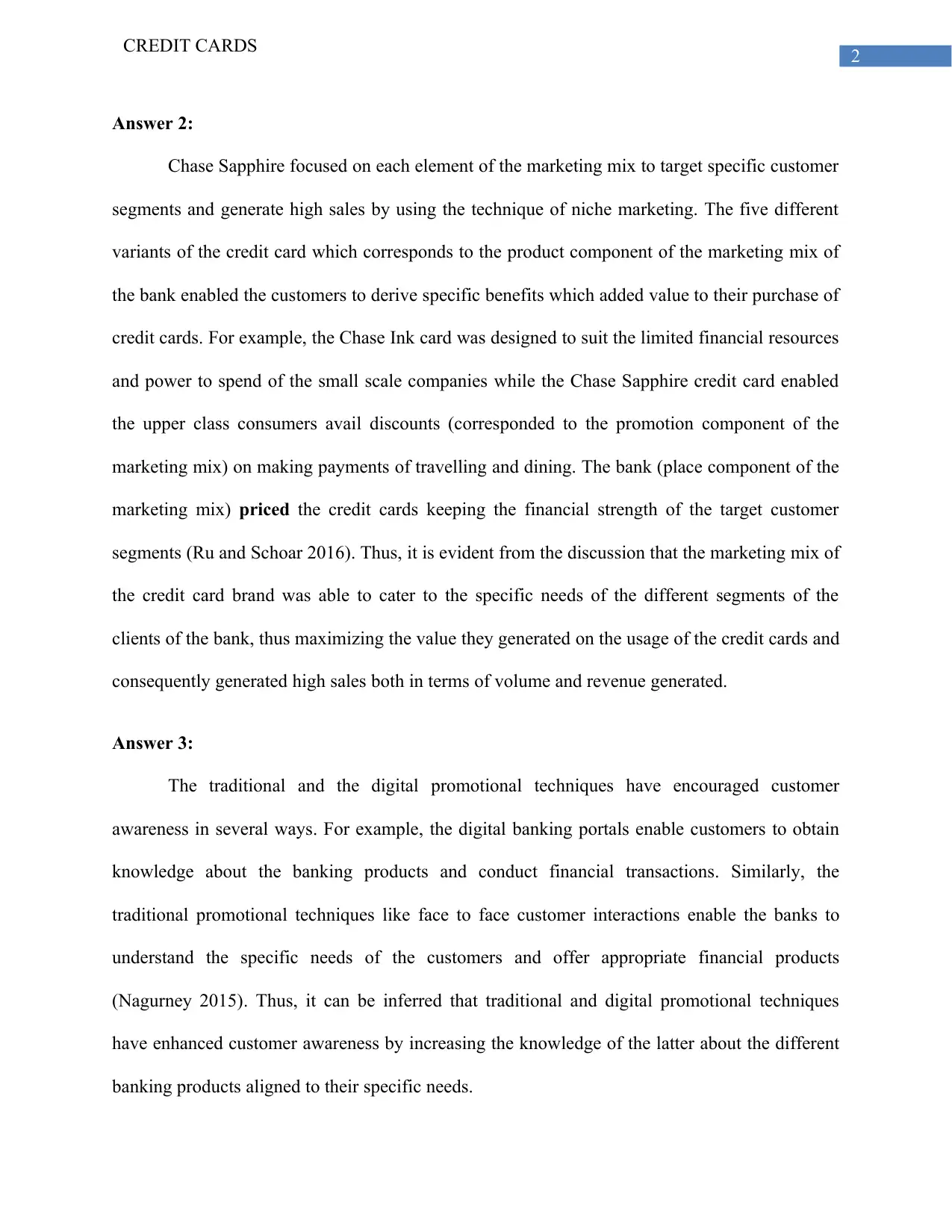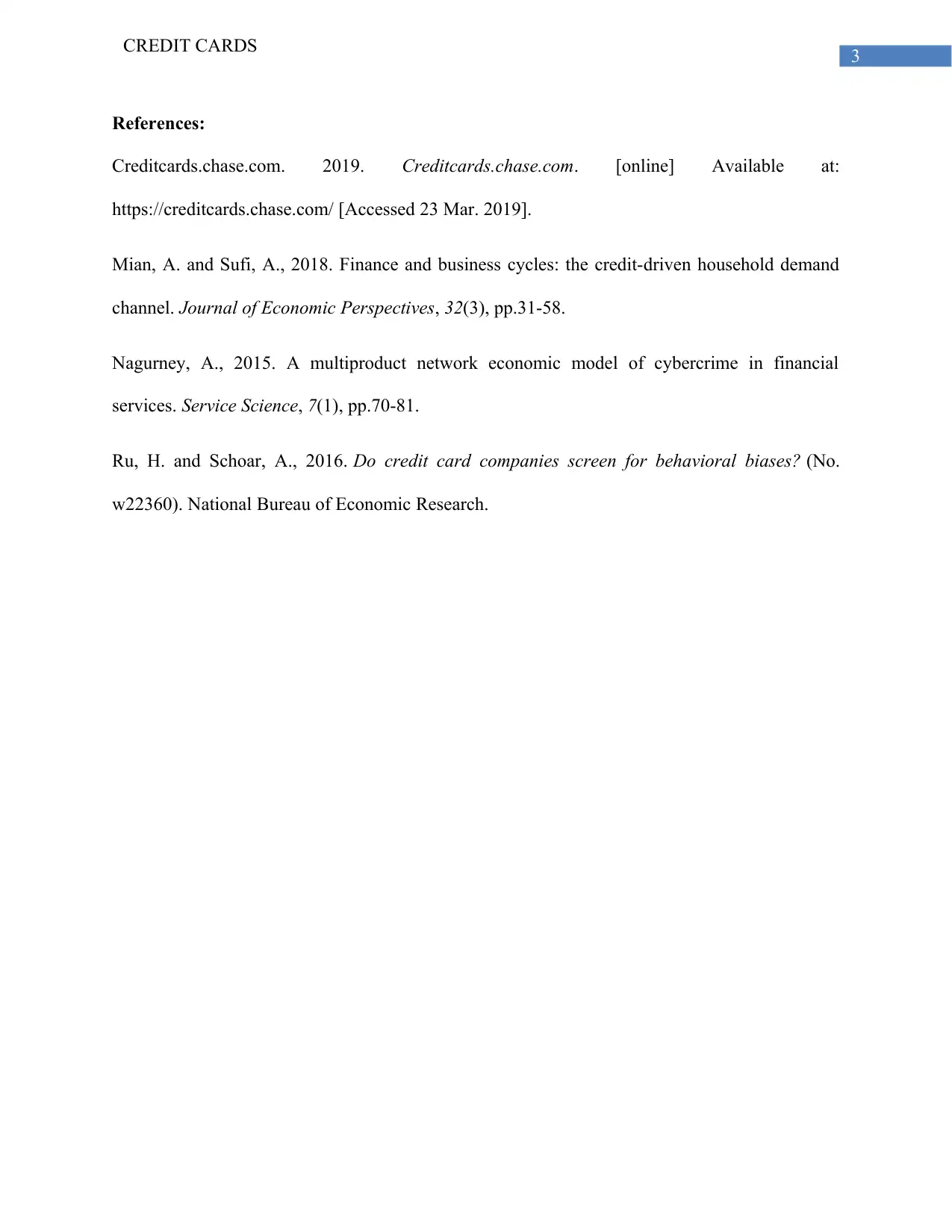Chase Sapphire: Case Study on Building a Millennial Cult Brand
VerifiedAdded on 2023/04/17
|4
|683
|262
Case Study
AI Summary
This case study examines JP Morgan Chase's successful launch of the Chase Sapphire Reserve Card and its appeal to the millennial demographic. The analysis highlights how understanding the competitive environment in the American credit card market allowed JP Morgan Chase to introduce targeted credit card products, such as Chase Sapphire, Chase Ink, Chase Freedom and Chase Slate, that cater to different customer segments. The marketing mix, including product differentiation, promotional techniques, and pricing strategies, played a crucial role in maximizing value for customers and generating high sales. The study also emphasizes the importance of both traditional and digital promotional techniques in enhancing customer awareness and understanding of the different banking products. For more case studies and solved assignments, students can refer to Desklib.
1 out of 4









![[object Object]](/_next/static/media/star-bottom.7253800d.svg)